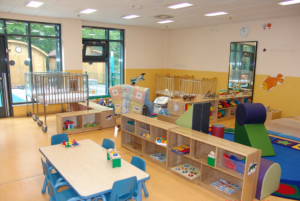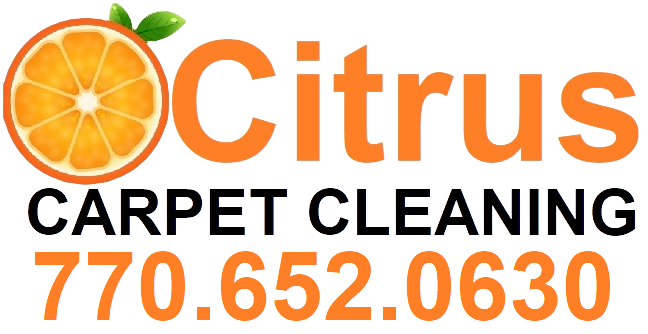Cleaning, Sanitizing, and Disinfecting
Childcare Facilities

Childcare environments are notorious for spreading infections. Parents can teach children to wash their hands, cover coughs and sneezes (with a tissue or their elbows, not their hands), and keep hands out of their mouths and eyes to help prevent them from getting or spreading an infectious illness. Unfortunately, these lessons cannot be taught to babies and very young toddlers.
Cleaning, Sanitizing, and Disinfecting
Childcare staff have the significant responsibility to appropriately clean, sanitize, and disinfect critical surfaces in their facility. It is important for staff to understand that cleaning, sanitizing, and disinfecting are separate and distinct tasks. The information below describes the differences among these tasks.
Cleaning, Disinfecting, Sanitizing: What Are the Differences?
Cleaning removes germs, dirt, and impurities from surfaces or objects. Cleaning works by using soap (or detergent) and water to physically remove germs from surfaces. This process does not necessarily kill germs, but by removing them, it lowers their numbers and the risk of spreading infection.
Sanitizing lowers the number of germs on surfaces or objects to a safe level, as judged by public health standards or requirements.
Disinfecting kills germs on surfaces or objects. Disinfecting works by using chemicals to kill germs on surfaces or objects. This process does not necessarily clean dirty surfaces or remove germs, but by killing germs on a surface after cleaning, it can further lower the risk of spreading infection.
Based on: https://www.cdc.gov/flu/school/cleaning.htm
Keeping the child care environment clean is one of the best ways to help ensure that children stay healthy. Dirty toys, bedding, linens, eating utensils, and surfaces can carry and spread germs. Regular disinfecting should be a part of the routine in a child care setting.
Getting things clean and reducing the spread of germs requires two different steps:
- Washing the item, using soap and water. Be sure to rinse thoroughly.
- Disinfecting the item. Cleaning removes dirt but does not kill all germs. To be sure germs are gone, you must disinfect them as well. The most common ways of disinfecting are as follows:
- You can disinfect with a bleach and water solution. A solution of regular household bleach and water is an inexpensive and easy way to disinfect surfaces and objects in child care programs. The amount of bleach and water to use depends on the concentration of the bleach you choose.
- You can use your dishwasher. Durable plastic toys can be washed in the dishwasher. High water pressure and temperatures do a great job of removing germs.
- You can use your washing machine. Wash cloth toys, linens, and bedding in the washing machine. Add one-half cup of chlorine bleach to the wash cycle when washing colorfast material; for non-colorfast material, add one-half cup of non-chlorinated bleach.
Remember that disinfecting is included in most states’ childcare licensing regulations. Different states have different rules about disinfecting solutions, water temperatures, and the use of dishwashers. Check your state child care licensing regulations to learn more.
Be Cautious about Using Commercial Disinfectants
Not all cleaning chemicals are safe and appropriate for use in a group child care setting. Here are some cautions to be aware of:
- Products that meet the Environmental Protection Agency’s (EPA) standards for “hospital grade” germicides (solutions that kill germs) often are promoted for use in child care. But many of these products are dangerous and potentially even toxic to children. It is important to read product labels carefully.
- Do not use cleaning products that carry a DANGER or a CORROSIVE label warning in your child care program. Be cautious about commercial or industrial products that advertise themselves as “disinfectants,” having “germicidal action,” or being able to “kill germs.” Often these products carry a warning label on the front of the container because they are toxic.
- Before using anything other than a bleach and water solution for disinfecting, check with your child care nurse consultant or licensing agency to make sure it’s acceptable for use in child care. If you do decide to use an EPA-approved industrial product as a sanitizer, carefully read the label and always follow the manufacturer’s instructions exactly.
Not all items and surfaces in childcare environments require sanitizing and disinfecting. The National Association for the Education of Young Children (NAEYC) provides a helpful Cleaning, Sanitizing, and Disinfecting Frequency Table. A sampling of information from the table indicates, for example, that:
- Machine washable cloth toys and dress-up clothes should be cleaned by laundering on a weekly basis
- Tables and highchair trays should be cleaned and then sanitized both before and after each use
- Changing tables should be cleaned and then disinfected after each use
- Diaper pails should be cleaned and then disinfected daily, at the end of the day
Getting the Job Done with Chlorine Bleach
One of the most popular and cost-effective products used for sanitizing and disinfecting surfaces in childcare environments is chlorine bleach. Regular strength chlorine bleach (approximately 6% strength) can be mixed with water in specific ratios to provide all the sanitizing and disinfecting power needed to help destroy pathogens on surfaces in childcare environments.
Top 5 Tips to Disinfect Your Child Care Facility Atlanta GA
- One-Way Wipe Down – Wipe down a surface in one direction and don’t go back over it in the opposite direction because you will deposit germs you just cleaned up. Routinely wipe down all frequently touched surfaces such as workstations, countertops and don’t forget doorknobs.
- Color Coded Cleaning – Color code cloths for specific spaces so you don’t cross-contaminate the kitchen cloths with the bathroom cloths and discard immediately after use.
- Smart Spraying – On the bottle, common household disinfectants tout their ability to kill 99.9% of bacteria and viruses, including human coronavirus (COVID-19), flu strains, E.coli and salmonella among others. But will they work against the new “novel “coronavirus? The U.S. Environmental Protection Agency says these disinfectants are thought to be effective against the new coronavirus strain, but until tests confirm it, this has not been scientifically proven.
- Tech Disinfect – Don’t forget to wipe down employee laptops, mousses and especially cell phones. One study by a web-based researched platform found we touch our cell phones 2,000 times a day. Other recent studies indicate the average adult brings their fingers to their nose, mouth or eyes about 16 times per hour, and germs thrive on human touch and the tech we touch! Our commercial office disinfection process attacks viruses, germs, bacteria, etc. in difficult, impossible to reach spaces.
- Hand-Washing Warnings – Post hand washing- and drying signs EVERYWHERE – from the kitchen to the bathroom – as a reminder to employees to wash hands with an alcohol-based hand sanitizer with at least 60-95% alcohol or with warm water and soap for at least twenty seconds. ( as long as it takes to sing the Happy Birthday song!) Dry hands thoroughly because germs spread with moisture.
You or your employees can “wipe down” a lot of things, but you’re probably missing a lot more than you’re “getting.”
We use a much SAFER, STRONGER, EFFECTIVE disinfectant, OZONE. Schedule your Ozone Treatment Today!
We are able to treat your child care facility, home, commercial office space, church, restaurant, etc.. Our treatment is a gas, not a liquid, it gets EVERYWHERE air is. EVERYTHING is treated, everywhere that can’t be reached with a wipe or a spray is treated because the gas does. PLUS it is more than 3,000 TIMES faster than bleach and 50% stronger sanitizer!
Contact us today for your childcare facility disinfecting and sanitizing.
Please don’t hesitate to contact us with questions. 770.652.0630

